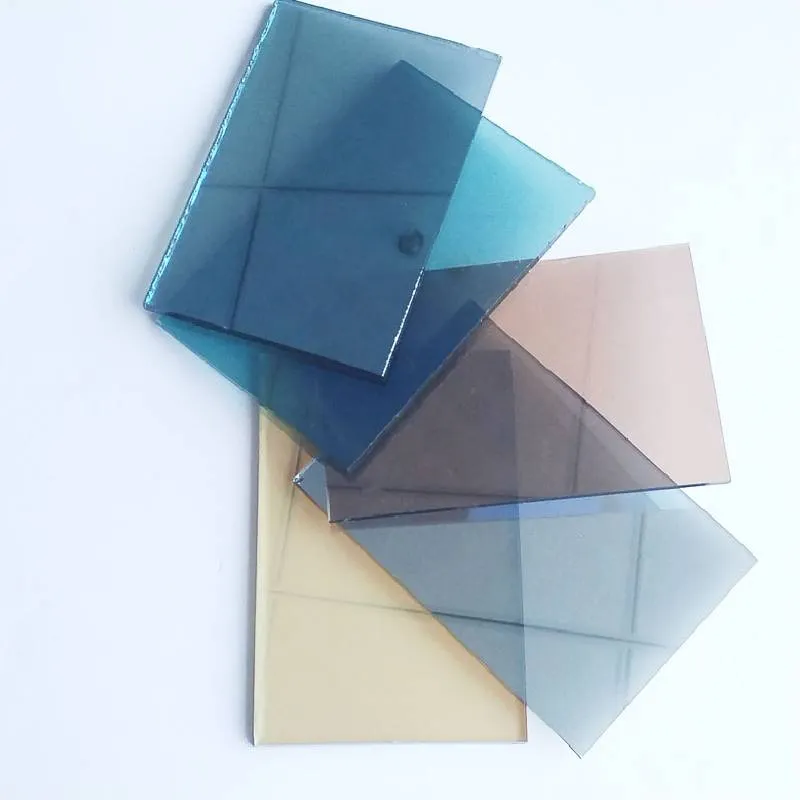The Enigmatic World of Reflective Glass and Mirrors
Reflective glass and mirrors serve as two of the most fascinating inventions in human history, playing a crucial role in both everyday life and various scientific applications. These innovative materials, while seemingly simple, harbor a wealth of intricate technology and profound symbolism, leaving a mark on both the physical environment and psychological states.
Reflective glass, often characterized by its ability to reflect light while still allowing some degree of transparency, is utilized in countless applications, from skyscrapers to automobiles. This type of glass typically undergoes a special coating process that enhances its reflective properties. The most common form involves applying a thin layer of metal oxide, which serves to both reflect sunlight and reduce heat absorption. As urban landscapes evolve, reflective glass has become a symbol of modern architecture, creating stunning facades that shimmer under sunlight and transition into delicate prisms at dusk.
The Enigmatic World of Reflective Glass and Mirrors
In contrast, mirrors, which are often composed of a glass surface coated with a metallic layer, serve a different yet equally compelling purpose. Mirrors have a long history, tracing back to ancient civilizations that used polished metals or natural reflective surfaces like water. Today, mirrors are ubiquitous in personal grooming, interior design, and even technology. They allow us to view ourselves, but they also evoke a myriad of psychological interpretations.
reflective glass and mirror
The mirror has been a powerful symbol in literature and art. It often represents self-reflection and introspection, inviting individuals to examine their identity and self-image. The phrase through the looking glass, famously popularized by Lewis Carroll's exploration of alternate realities, encourages us to consider perspectives beyond our immediate understanding. In psychology, mirrors can elicit profound responses; for some, they are empowering, while for others, they might provoke feelings of inadequacy or self-doubt.
Beyond their philosophical implications, mirrors play pivotal roles in various technologies. They are essential components in optical devices such as telescopes and cameras, where they manipulate light to achieve clarity and focus. In the medical field, mirrors assist in surgical procedures, allowing doctors to navigate intricate areas of the human body. The interaction of light with reflective surfaces opens doors to scientific advancements, enhancing our understanding of the universe.
Reflective glass and mirrors also have a presence in art and design, often employed to create an illusion of space or to challenge perceptions of reality. Artists like Anish Kapoor and Olafur Eliasson utilize reflection to warp perspectives, inviting viewers to engage with their surroundings in new and unexpected ways. These installations evoke a sense of wonder, highlighting the potential for reflective surfaces to transcend their functional roles and become experiential pieces.
In conclusion, the realms of reflective glass and mirrors offer more than mere functionality. They are intertwined with environmental sustainability, technological advancement, and deep philosophical inquiry. As we navigate a world increasingly defined by visual experiences, understanding the significance of these reflective materials could enhance our appreciation for both their practical applications and their deeper meanings. Whether it's a gleaming skyscraper or a simple bathroom mirror, these surfaces allow us to reflect not only light but also the complexities of human existence.
 Afrikaans
Afrikaans  Albanian
Albanian  Amharic
Amharic  Arabic
Arabic  Armenian
Armenian  Azerbaijani
Azerbaijani  Basque
Basque  Belarusian
Belarusian  Bengali
Bengali  Bosnian
Bosnian  Bulgarian
Bulgarian  Catalan
Catalan  Cebuano
Cebuano  Corsican
Corsican  Croatian
Croatian  Czech
Czech  Danish
Danish  Dutch
Dutch  English
English  Esperanto
Esperanto  Estonian
Estonian  Finnish
Finnish  French
French  Frisian
Frisian  Galician
Galician  Georgian
Georgian  German
German  Greek
Greek  Gujarati
Gujarati  Haitian Creole
Haitian Creole  hausa
hausa  hawaiian
hawaiian  Hebrew
Hebrew  Hindi
Hindi  Miao
Miao  Hungarian
Hungarian  Icelandic
Icelandic  igbo
igbo  Indonesian
Indonesian  irish
irish  Italian
Italian  Japanese
Japanese  Javanese
Javanese  Kannada
Kannada  kazakh
kazakh  Khmer
Khmer  Rwandese
Rwandese  Korean
Korean  Kurdish
Kurdish  Kyrgyz
Kyrgyz  Lao
Lao  Latin
Latin  Latvian
Latvian  Lithuanian
Lithuanian  Luxembourgish
Luxembourgish  Macedonian
Macedonian  Malgashi
Malgashi  Malay
Malay  Malayalam
Malayalam  Maltese
Maltese  Maori
Maori  Marathi
Marathi  Mongolian
Mongolian  Myanmar
Myanmar  Nepali
Nepali  Norwegian
Norwegian  Norwegian
Norwegian  Occitan
Occitan  Pashto
Pashto  Persian
Persian  Polish
Polish  Portuguese
Portuguese  Punjabi
Punjabi  Romanian
Romanian  Russian
Russian  Samoan
Samoan  Scottish Gaelic
Scottish Gaelic  Serbian
Serbian  Sesotho
Sesotho  Shona
Shona  Sindhi
Sindhi  Sinhala
Sinhala  Slovak
Slovak  Slovenian
Slovenian  Somali
Somali  Spanish
Spanish  Sundanese
Sundanese  Swahili
Swahili  Swedish
Swedish  Tagalog
Tagalog  Tajik
Tajik  Tamil
Tamil  Tatar
Tatar  Telugu
Telugu  Thai
Thai  Turkish
Turkish  Turkmen
Turkmen  Ukrainian
Ukrainian  Urdu
Urdu  Uighur
Uighur  Uzbek
Uzbek  Vietnamese
Vietnamese  Welsh
Welsh  Bantu
Bantu  Yiddish
Yiddish  Yoruba
Yoruba  Zulu
Zulu 

